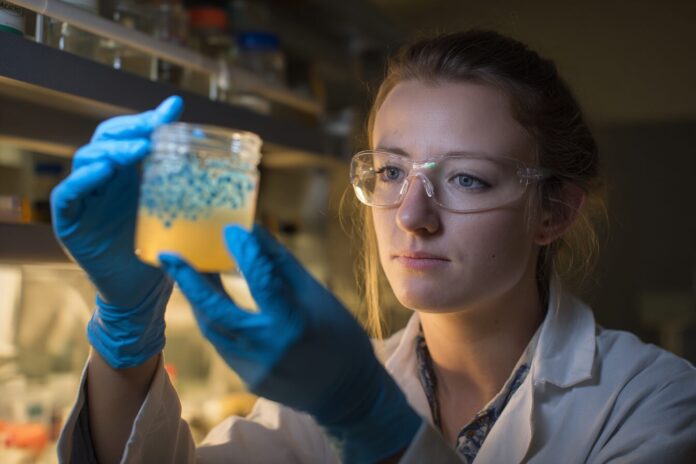Reimagining Waste: From Plastic Bottles to Painkillers
In a world struggling with both overwhelming plastic pollution and the urgent need for sustainable pharmaceuticals, scientists have made a breakthrough that transforms the challenge into opportunity. Researchers have developed an innovative method using genetically engineered Escherichia coli (E. coli) bacteria to convert polyethylene terephthalate (PET) waste—discarded water bottles, packaging materials, and more—into paracetamol, the active ingredient in many standard painkillers such as Tylenol and Panadol. This process redefines waste management by actively converting harmful pollutants into life-saving medicines.
Most importantly, this pioneering method showcases the power of biotechnology in addressing environmental challenges. Because the research leverages readily available plastic waste, it not only reduces environmental burden but also cuts down on the reliance on fossil fuel-based raw materials for drug production. Therefore, this breakthrough represents an essential integration of environmental stewardship and innovative pharmaceutical manufacturing. For additional reading on the broader implications of this research, you can refer to the detailed analysis by The Independent and NDTV.
How the Process Works
The process begins with the chemical breakdown of PET plastic into its fundamental components, notably terephthalic acid. Unlike traditional recycling methods that merely downcycle plastic into lower quality products, this innovative technique upcycles plastic waste into high-value chemical compounds. Because the method is designed to be energy-efficient and sustainable, it offers a modern alternative to conventional, environmentally harmful recycling processes.
Subsequently, engineered E. coli bacteria with tailored genetic modifications are introduced to the chemically broken components. Through a fermentation process, much like brewing beer, these bacteria convert the molecules into an intermediate compound known as PABA (para-aminobenzoic acid). Thereafter, the bacteria further transform PABA into paracetamol. Scientific reports indicate that approximately 92% of the plastic waste can be converted into the desired product within just 24 to 48 hours at room temperature, demonstrating both efficiency and scalability. For more technical insight, please visit ScienceAlert and Phys.org.
Significance of the Discovery
Most importantly, the innovation tackles two significant global challenges simultaneously. On one hand, it offers a solution to the dismal problem of plastic waste accumulation; on the other, it provides an alternative method for producing essential pharmaceuticals traditionally derived from petrochemicals. Because paracetamol is typically synthesized using nonrenewable resources, this new method dramatically reduces the environmental impact associated with its production.
Besides that, the method’s energy efficiency and ease of scalability make it a highly compelling approach for future industrial applications. The process’s ability to function in simple laboratory settings without requiring high-energy inputs means it might be successfully deployed in regions with limited industrial infrastructure. This innovation paves the way for a greener, more circular economy, transforming waste into a value-added product and reducing reliance on fossil fuels.
Environmental and Industrial Implications
Globally, plastic waste poses one of the most pressing environmental challenges, with over 350 million tons produced annually. A significant portion of this waste is PET, which frequently finds its way into landfills and oceans. Because traditional recycling methods often result in downcycled products that eventually contribute to further waste, the novel upcycling process offers a sustainable and efficient alternative. By converting PET waste into paracetamol, this technology not only mitigates plastic pollution but also fosters a more integrated approach to resource management.
Furthermore, the method significantly decreases the carbon footprint compared to petrochemical-based production processes. Therefore, industries could adopt this method to achieve greater sustainability, while regulatory bodies may find it easier to align with environmental standards. As reported by Technology Networks, this breakthrough opens a new avenue for industrial applications that combine waste management with pharmaceutical production, embodying a new era of integrated circular economies.
Challenges and Future Potential
Despite its promise, the technology is still in its developmental stages. Therefore, moving forward, researchers must address several challenges, including scaling the process to industrial levels and ensuring consistency in yield and product purity. Because the integration of biotechnology with traditional chemistry is complex, further research and development are essential to refine the process for broader adoption.
Moreover, regulatory approval and quality assurance will play a significant role in the future of this technology. Scientists are already optimistic about its potential; besides that, the economic benefits, along with reduced environmental impacts, provide a strong incentive for further investment and research. For more detailed coverage on the developmental hurdles and future prospects of this biotech innovation, you may refer to the articles on NDTV and The Independent.
Conclusion
The transformation of plastic waste into a widely used pain reliever via engineered bacteria represents more than an innovative scientific breakthrough—it is a transformative approach that holds the promise of a cleaner, healthier future. Most importantly, by marrying environmental sustainability with pharmaceutical manufacturing, this technology offers a practical solution to some of the most persistent challenges of our time.
Because this technology is poised to revolutionize both waste management and drug production, it could eventually form the cornerstone of sustainable industrial practices. As the research advances and moves closer to commercial application, the convergence of biotechnology and waste recycling will likely spawn further innovations, ultimately making our world a safer and more resource-efficient place.
References:
1. Common bacteria could turn plastic waste into painkillers, study finds
2. Plastic To Paracetamol: Scientists Convert Waste Into Painkiller In 24 Hours
3. Engineered E. Coli Transforms Waste Plastic Into Common Painkiller
4. Upcycling plastic into painkillers: Microbes transform everyday waste into acetaminophen
5. Plastic Waste Becomes Paracetamol With Engineered E. coli



